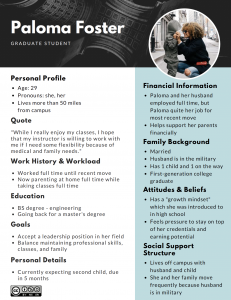Who are our students?
Is there such a thing as a “typical” college student? The evidence suggests that no, there is no such a thing as a typical college student. According to the National Center for Education Statistics, 2015 Report, 74% of all undergraduates are “nontraditional” students. This means that they have at least one or more of the following characteristics: having one or more dependents, working full time, attending school part time, taking a gap between high school and college, and completing a GED instead of a high school diploma. It is simultaneously exciting and challenging that higher education has become more accessible to an increasingly diverse student body. The challenge for instructional designers and faculty, therefore, is to keep up with how to design courses that welcome and support all students.
Do we design for the majority or for the “extremes”?
If we design courses for the most common student situations, we end up serving students who already have advantages, who can already see, hear, and pay tuition with ease. When we design for the extreme situations, however, we support students who may have uncommon or specific strengths, as well as potential barriers such as disabilities or financial strain. Furthermore, when we design for the extremes, the outcome benefits all students, thus aligning our course with the principles of Universal Design for Learning (UDL). The quintessential example of this is, of course, closed captioning: Closed captioning was designed to help people with hearing loss, but it was quickly discovered to be useful for all kinds of people for various reasons, including English language learners, for example. This same schema of the benefits of closed captioning can be applied to other solutions where we design for extreme situations. The result of designing for extremes is that the experiences for all users are enhanced.
Personas: What are they, and how are they used?
One approach to designing inclusive courses is to use personas in the course design stage. A persona is fictional representation of a user group and is intended to foster empathy for that particular user group whose needs resemble the fictional persona. A persona may include a photo of a fictional individual (provided by Unsplash, for example) as well as information related to the design challenge. In this case, my colleague Heather Garcia and I have developed a set of personas for use in designing online undergraduate and graduate courses. The student data that we included in each persona are based on quantitative and qualitative national and local demographic information. The personas that we created focus on students who may bring unique strengths to the course or find more barriers in their educational journey compared to “traditional” college students. With these diverse personas, we grow our empathy and can be efficiently guided into designing for nontraditional students who are based in reality.
Okay, I have a set of personas. What next?

Here is an exercise using personas for the purpose of designing inclusive courses:
- Choose a set of personas to work from:
- You might choose to focus on a particular theme, such as personas with disabilities or personas representing both diverse strengths and barriers: OSU Ecampus Personas for Course Design
- Select a few personas from the set.
- Get to know your “students” represented in the personas.
- With your course in mind, ask yourself the following questions:
- What strengths do these personas bring to the course?
- What barriers do you anticipate these personas will face?
- What design decisions would you make to support all personas as they work to meet the learning outcomes?
- The answers to the above questions can help you make design decisions that create an inclusive course, one in which all students are welcomed and supported.
How did it go?
One way to include this exercise in your design practice is to keep a deck of printed personas, like a deck of cards, nearby as part of your design toolbox. That way, instructional designers and instructional faculty can then do a personas design challenge during the design stage of each course.
Have you used personas in your course design? Please leave a comment and let us know how it went!
References and resources:
- Personas_Ecampus_2019-blog (1) by Elisabeth McBrien & Heather Garcia
- Accessibility, Universal Design for Learning (UDL), and Inclusive Design: What Do They Really Mean? Posted on December 16, 2019 by Heather Garcia
- Universal Design with Personas, The Pennsylvania State University
- Universal Design for Learning, CAST.org
- Unsplash.com (Free-to-use photos)

